Climate Change
Atmospheric Dumping Ground
Today’s atmospheric concentrations of carbon dioxide far exceed the natural range over the last 650,000 years.[6. IPCC. Fourth Assessment Report. Synthesis Report. www.ipcc.ch]
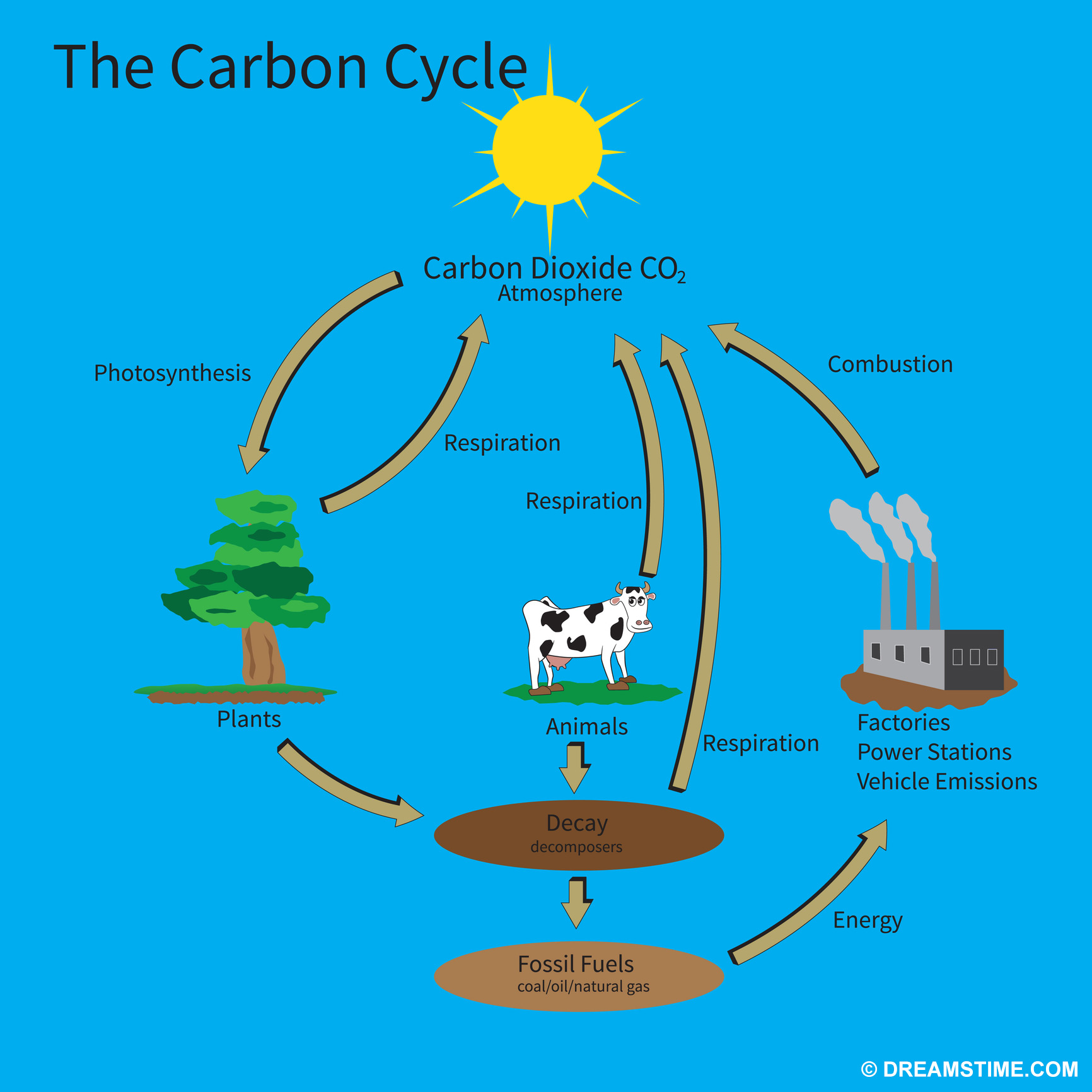
The Carbon Cycle showing how carbon is recycled in the environment
Our current rate of carbon dioxide levels in the atmosphere of about 2 parts per million (ppm)/year exceeds that of the Palaeocene-Eocene Thermal Maximum – a period of global warming where many terrestrial mammals became extinct. Humans have released about 1,374 billion tonnes of carbon dioxide into the atmosphere since the 1800s.[7. World Meteorological Organization. “Greenhouse Gas Bulletin. The State of Greenhouse Gases in the Atmosphere Based on Global Observations through 2011.” Nov. 19, 2012. www.wmo.int]
Before the Industrial Revolution (around 1750), the Earth’s carbon dioxide level was 280 ppm. As of January 2013, the global carbon dioxide concentration had risen to 395 ppm – it is predicted that by 2013 those levels will hit 500 to 1000 ppm.[8. IPCC. Data Distribution Centre. “Carbon Dioxide: Projected emissions and concentrations.” November 2011. www.ipcc-data.org]
The atmosphere is treated as an unregulated dumping ground free for everybody to put whatever they want into it and that needs to stop. – Andrew Weaver, University of Victoria, Revolution
Temperatures have risen around the world, with greater temperature increases at higher northern latitudes.[9. IPCC Fourth Assessment Report: Climate Change 2007. Synthesis Report. Chapter 1.1. “Observed changes in climate and their effects.” www.ipcc.ch] Average Arctic temperatures have increased at almost twice the global average rate in the past 100 years.[10. IPCC Fourth Assessment Report: Climate Change 2007. Synthesis Report. Chapter 1.1. “Observed changes in climate and their effects.” www.ipcc.ch] Recent studies suggest it was increased carbon dioxide levels that led to the end of the last ice age.[11. Nature. “Global warming preceded by increasing carbon dioxide concentrations during the last deglaciation.” J. Shakun et al. April 5, 2012. www.nature.com] The raised temperatures that brought the earth out from beneath the ice are similar to the rapid increase in levels we’ve created since the industrial revolution.
Progress: Non-Stop Carbon Dioxide

Carbon Pollution in our Atmosphere

Climate Change was once caused by natural events like Volcanic Activity
Carbon dioxide is the largest contributor to global warming of all the greenhouses gases. Depending on emission rates, carbon dioxide levels of today could double or triple by 2100.[12. United States Environmental Protection Agency. “Climate Change. Causes of Climate Change.” www.epa.gov] Scientists estimate that the Earth will warm by an average 1.1 to 6.4°C by 2100 – increasing an average of 0.2°C per decade.[13. IPCC Fourth Assessment Report: Climate Change 2007. Synthesis Report. www.ipcc.ch]
Past climate change was caused by natural events: changes in Earth’s orbit, the sun’s intensity, the amount of explosive volcanic activity, changes to the surface of the Earth and the position of the continents.[14. Government of Canada. “Canada’s Action on Climate Change. 10 Things You Should Know About Climate Change.” Aug. 23, 2012] Now, climate change is caused by human activities.
We are putting more carbon emissions into the atmosphere than the lands and oceans can absorb. Together, they absorb about half of global carbon dioxide emissions, but it’s not enough to stop global warming. In fact, oceans have been taking up more than 80 percent of the heat being added to the climate due to increased greenhouse gas emissions for the last 50 years.[15. PCC Fourth Assessment Report: Climate Change 2007. Synthesis Report. Chapter 1.1. “Observed changes in climate and their effects.” www.ipcc.ch]
Due to global warming, land and ocean uptake of carbon dioxide will be reduced – so more carbon dioxide will remain in our atmosphere.
Our Fossil Fuel Addiction

Carbon dioxide from burning fossil fuels (like oil during transportation) makes up 57 percentof global greenhouse gases
Carbon dioxide from burning fossil fuels (coal, natural gas, oil) makes up 57 percent of global greenhouse gases.[16. EPA/IPCC] Fossil fuels are burned for electricity, transportation, industry, cooking and heating.
Did you know that carbon dioxide released from the burning of fossil fuels like coal, oil, and gas has no carbon-14, a radioactive form of carbon?[17. American Geophysical Union. New monitoring system identifies carbon dioxide from fossil fuel burning. www.agu.org] This is how carbon dioxide from human activities can be calculated separately from carbon dioxide from natural processes.
Rehab Needed for Energy Addiction
We have relied on fossil fuels as our main supply of energy for more than 150 years. Fossil fuels supply 80 percent of global energy needs and[18. World Coal Institute. Key Elements of a post-2012 agreement on Climate Change. www.worldcoal.org] demand will grow by more than one-third by 2035.[19. International Energy Agency. “North America leads shift in global energy balance, IEA says in latest World Energy Outlook.” November 12, 2012.] China, India and the Middle East account for 60 percent of the growth.[20. International Energy Agency. “North America leads shift in global energy balance, IEA says in latest World Energy Outlook.” November 12, 2012.]
Arguments that fossil fuels are cheaper to use than renewables, flies in the face of the subsidies provided to fossil fuel industries. In 2011, fossil fuel subsidies totalled $523 billion.[21. International Energy Agency. “North America leads shift in global energy balance, IEA says in latest World Energy Outlook.” November 12, 2012.]

We have relied on fossil fuels as our main supply of energy for more than 150 years
2010 carbon dioxide emissions from fossil fuels totalled 30.3 billion tonnes:[22. International Energy Agency. CO2 Emissions From Fuel Combustion. Highlights 2012.]
- 43% coal = 13.1 billion tonnes
- 36% oil = 10.9 billion tonnes
- 20% gas = 6.1 billion tonnes
2035 carbon dioxide emissions from fossil fuels are estimated to be 37 billion tonnes.41% coal = 15.3 billion tonnes[23. International Energy Agency. CO2 Emissions From Fuel Combustion. Highlights 2012.]
- 34% oil = 12.6 billion tonnes
- 25% gas = 9.2 billion tonnes
one billion tonnes equals the mass of 250,000,000 Asian elephants
The top three fossil fuel carbon dioxide emitters are China (7.3 billion tonnes), United States (5.4 billion tonnes) and India (1.6 billion tonnes).[24. Biogeosciences. 2012. A synthesis of carbon dioxide emissions from fossil fuel combustion. Andres, R. et al. www.biogeosciences.net and International Energy Agency. CO2 Emissions From Fuel Combustion. Highlights 2012]
Carbon dioxide emissions from fossil fuels must be reduced to stabilize atmospheric concentrations.[25. Biogeosciences. 2012. A synthesis of carbon dioxide emissions from fossil fuel combustion. Andres, R. et al. www.biogeosciences.net]
With global warming already taking place, governments and scientists are setting their goals on initiating changes that will keep average temperature increases to 2°C. As part of this plan, annual coal emissions would have to be reduced to 5.6 billion tonnes by 2035 using low-emission technologies—experts believe it is possible.
Pull the Plug, Say NO to Coal
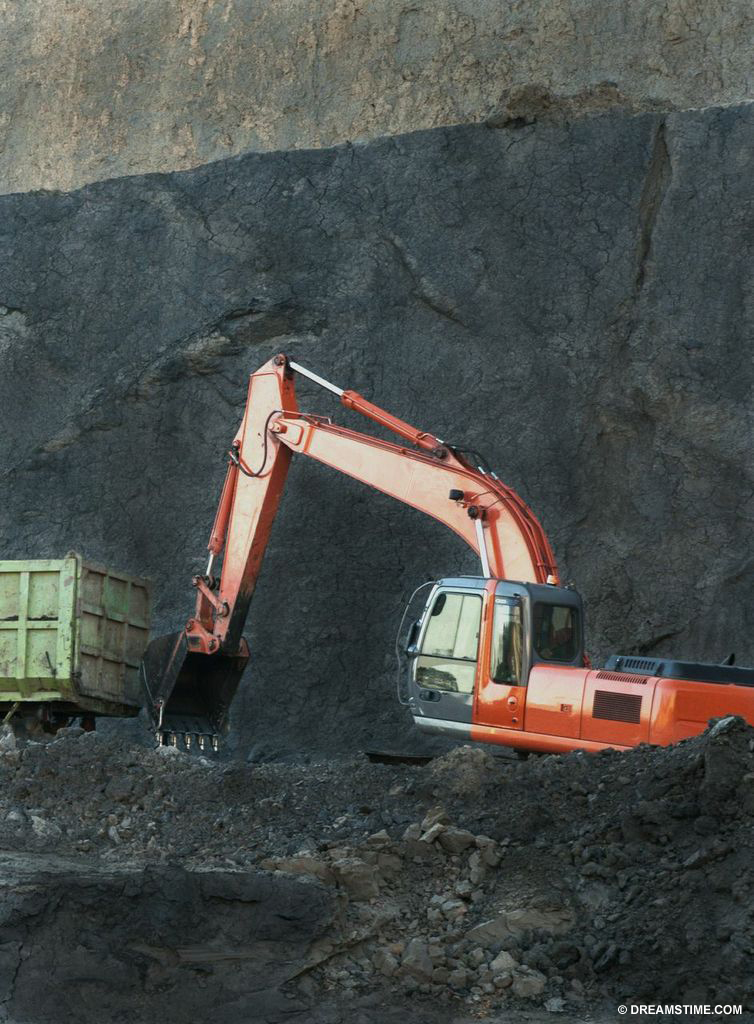
Coal is called the dirtiest fossil fuel because burning coal creates almost twice the amount of carbon dioxide per unit of energy than gasoline or natural gas
Electricity and heat generation created 41 percent of global carbon dioxide emissions from fossil fuels in 2010.[26. International Energy Agency. CO2 Emissions From Fuel Combustion. Highlights 2012.]
Coal-fired power plants are the largest contributor of greenhouse gases. Coal is called the dirtiest fossil fuel because burning coal creates almost twice the amount of carbon dioxide per unit of energy than gasoline or natural gas.[27. US Energy Information Administration. www.eia.gov] In 2010, more than 4.3 billion tonnes of coal were used to generate power.[28. World Resources Institute. Global Coal Risk Assessment. November 2012.]
China, India and Australia (and other countries) produce more than 60 percent of their electricity and heat from coal.[30. International Energy Agency. CO2 Emissions From Fuel Combustion. Highlights 2012.] The United States only uses coal for 42 percent of its electricity[31. US Energy Information Administration. www.eia.gov/renewable_electricity.cfm] yet it is the world’s second largest coal consumer.
China is the largest consumer of coal in the world.[32. World Resources Institute. Global Coal Risk Assessment. November 2012.] China used 46 percent of the coal consumed in 2010. China’s promise to limit their yearly coal use in the future rolls in at a whopping 3.9 billion tonnes by 2015.
Electricity demand is expected to increase by 70 percent by 2035 due to population and increased income in developing countries.[33. International Energy Agency. CO2 Emissions From Fuel Combustion. Highlights 2012.] With a history of being cheap, easy to extract, and in abundant supply, coal is an easy choice for power for many countries like China and the United States. In 2012, 1,199 new coal-fired plants were proposed to be built worldwide – the combined power capacity of these plants is almost four times the current capacity of all coal-fired plants in the United States.[34. World Resources Institute Insights. Global Coal Risk Assessment. November 2012.]
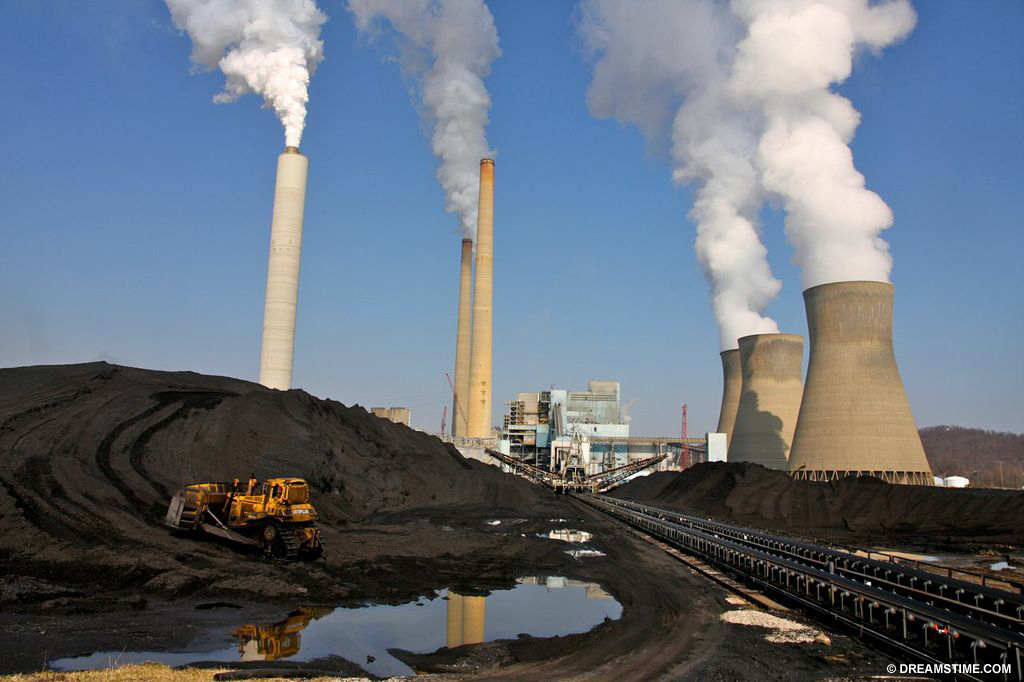
There are approximately 2300 coal-fired power stations worldwide.[36. sourcewatch.org]
- There are approximately 2300 coal-fired power stations worldwide.
Mining enough coal to satisfy demands will take a toll on lands and communities in the United States, China, India[37. worldcoal.org] and other coal-producing countries.
- The average American creates about 20 tonnes of carbon dioxide emissions a year.[38. PMEL] Test your carbon footprint.
The choice of whether to burn fossil fuels, use nuclear energy or renewables for electricity comes down to the cost of meeting energy demands. When will the costs to the planet and humanity factor into governments’ decision-making?
Getting a Handle on the Pumps
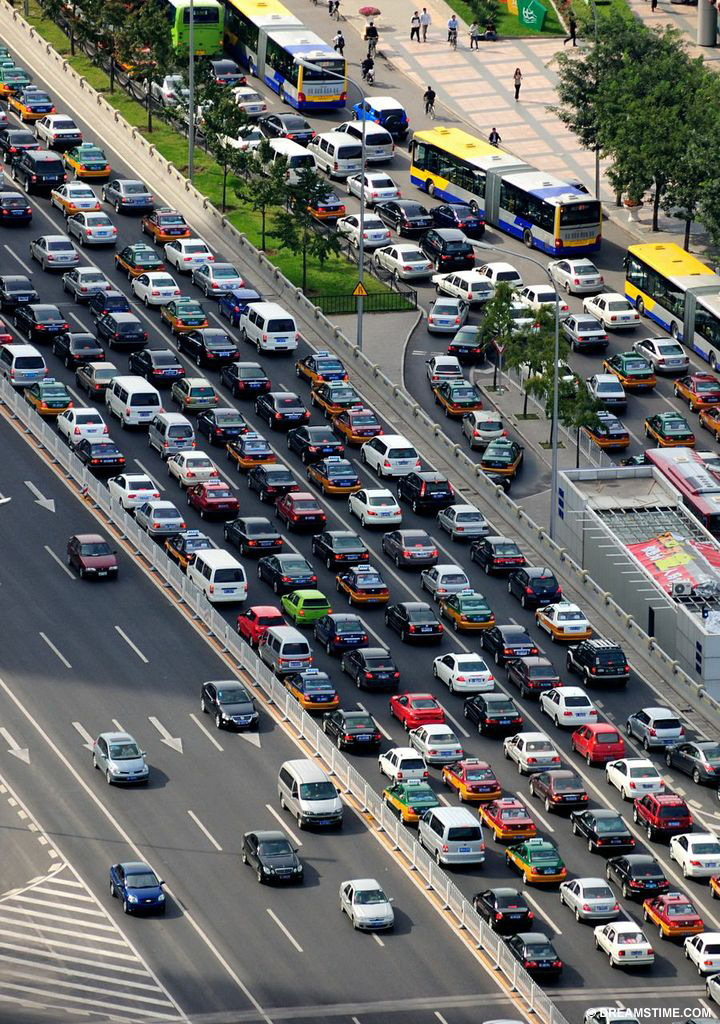
Beijing Traffic – Transportation is the second largest contributor of global carbon dioxide emissions from fossil fuels
Transportation rolls in as the second largest contributor of global carbon dioxide emissions from fossil fuels (22 percent), in 2010.[39. International Energy Agency. CO2 Emissions From Fuel Combustion. Highlights 2012.] Demand for fuel is only expected to grow. Canada plans to meet that demand with oil from the Alberta Tar Sands, which belches 40 million tonnes of carbon dioxide per year (and growing). The amount of pollution created from processing the tar sands has earned Canada international attention.
Link to video: Learn more about the Alberta Tar Sands Oil Extraction – The Dirty Truth
- Road vehicles create about 75 percent of the carbon dioxide from transportation[40. International Energy Agency. CO2 Emissions From Fuel Combustion. Highlights 2012.]
Globally, the number of cars on the road reached more than one billion in 2010.[41. Huffington Post.] The country with the most cars, is of course, the United States boasting a total of 239.8 million cars. China comes in second and has a growing demand along with India and Brazil.
- In 2012, more than 60 million passenger cars were made.[42. Worldometers.info]
- Burning one litre of gas in a car creates approximately 2 kilograms of carbon dioxide.[43. US EPA]
Deforestation
Carbon dioxide from deforestation makes up 17 percent of global greenhouse gas emissions, making deforestation the second highest contributor of greenhouse gases in the world. Burning trees releases stored carbon and destroyed forests can no longer remove carbon dioxide from the air.
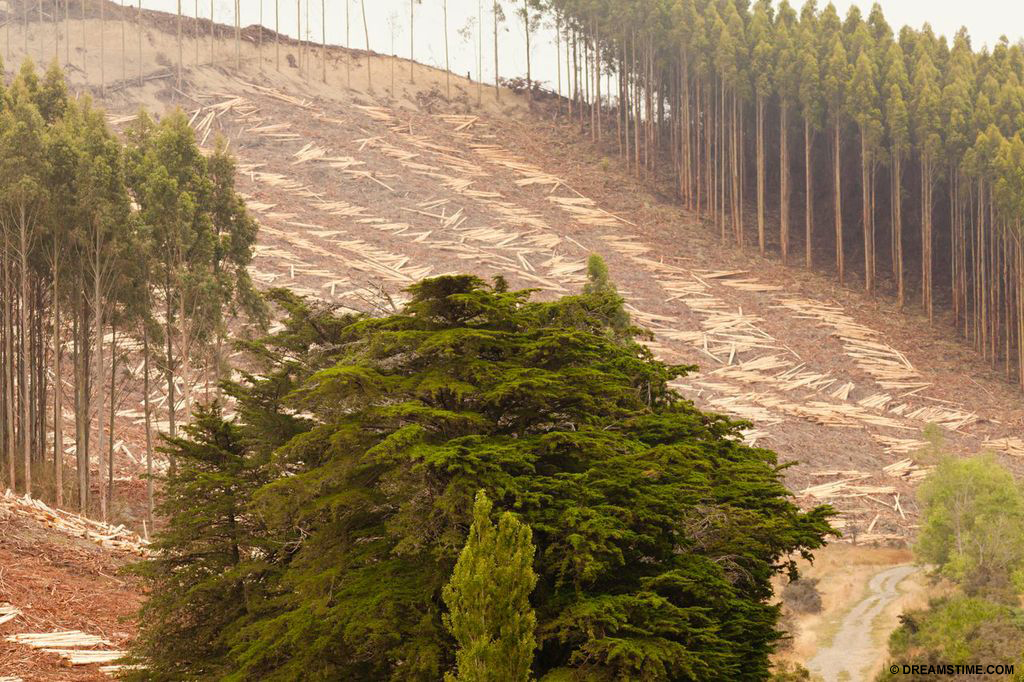
Deforestation

